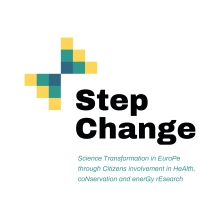|
The Centre for Social Innovation (ZSI) provides clients with a comprehensive know-how on quantitative methods of empirical social research. This includes all areas and phases of research like data collection, data preparation, data analysis, and visualisation. Worthy of noting is the wide range of specific expertise on inferential statistical techniques like regression analysis, factor analysis, principal component analysis, cluster analysis, and many more. |
In sociology, quantitative research refers to the systematic empirical investigation of social phenomena via statistical, mathematical or numerical data, or computational techniques. The objective of quantitative research is to develop mathematical models, theories, or hypotheses pertaining to phenomena.
Proven steps to an appropriate empirical design by ZSI
Data collection encompasses the use of high-quality quantitative, standardized surveys in print or online. This is followed by a precise data preparation, which means logging the data in and checking for accuracy. The data analysis by e.g. applying descriptive statistics helps to describe the basic features of the data in a study. Descriptive statistics include measures of central tendency , like the mean, median, and mode, and measures of variability about the average, like the standard deviation, variance, or range. Together with simple graphics analysis, they form the basis of every quantitative analysis of data.
Generalizing from a sample to a population
To test research hypotheses and to make generalizations from a sample to a population, we use various inferential statistical techniques. As there are many statistical techniques for conducting quantitative analyses, ZSI offers support to identify the most appropriate technique for a given study, which varies with the type of study and key research questions. Among others, ZSI offers specific know-how on general linear models (multiple regression analysis – linear and logistic regression), ANOVA and MANOVA, factor analysis, principal component analysis, correspondence analysis, cluster analysis.
An example
In the project, 'Ascent into highly skilled occupations after immigration' (german title: Aufstieg in hochqualifizierte Berufe), we used representative microcensus data from Germany and Austria to explore the extent to which migrants and their offspring reached highly qualified occupations on the labour markets in the two countries, and whether origin- and gender-specific differences existed. We applied logistic regression analysis to examine migrants' status passages (e.g. school-to-work transition), and the selectivity of educational and labour market institutions on the way to stable higher status employment. The results show that social inequalities' (e.g. poor social background characteristics) pose the greatest problem in the education system, whereas 'ethnic inequalities' can be observed concerning the access to highly-skilled jobs on the labour market.
Ansprechperson: Dr. Mag.ª Stefanie Konzett-Smoliner
Attachments:
Relevante Artikel:
Kooperationspartner
Projekte
- The opportunities for industrial relations to prevent and manage psychosocial risks in post-pandemic workplaces
- Welfare systems and labour market policies for economic and social resilience in Europe
- Mobilizing Austrian Vocational Training Know-How in Africa
- Bestandsaufnahme der Kooperation und Vernetzung österreichischer und nordamerikanischer Forschender, FTI-Stakeholder und -Institutionen
- Platform for a policy evaluation community for improved EU policies and better acknowledgment
- show more ..
Publikationen
- STEAM Education: The Claim for Socially Innovative Practices
- Results of the Green Transition Evaluation study of Horizon 2020
- ‘Hard to reach’ or ‘easy to ignore’. Strategies and reflections on including co-researchers
- Promoting gender balance and inclusion in R&I and training - Final Evaluation Report
- „Ich selbst hab zuwenig Kapazitäten, um mein Kind zu motivieren."
- show more ..
Veranstaltungen
- Webinar: Daten finden, nutzen und neues Wissen schaffen
- Kick-off meeting of the EU-SPI Pilot project
News
- CfP for the WeLaR project's Final Conference in Brussels on June 12, 2025
- STEAM Education: The Claim for Socially Innovative Practices
- Reviving history: “My STECCI Story” Workshops in Sarajevo, Split & Podgorica
- The Austrian RTI Evaluation Platform has a new managing director
- Wiener Gleichstellungsmonitor veröffentlicht!
- show more ..













































